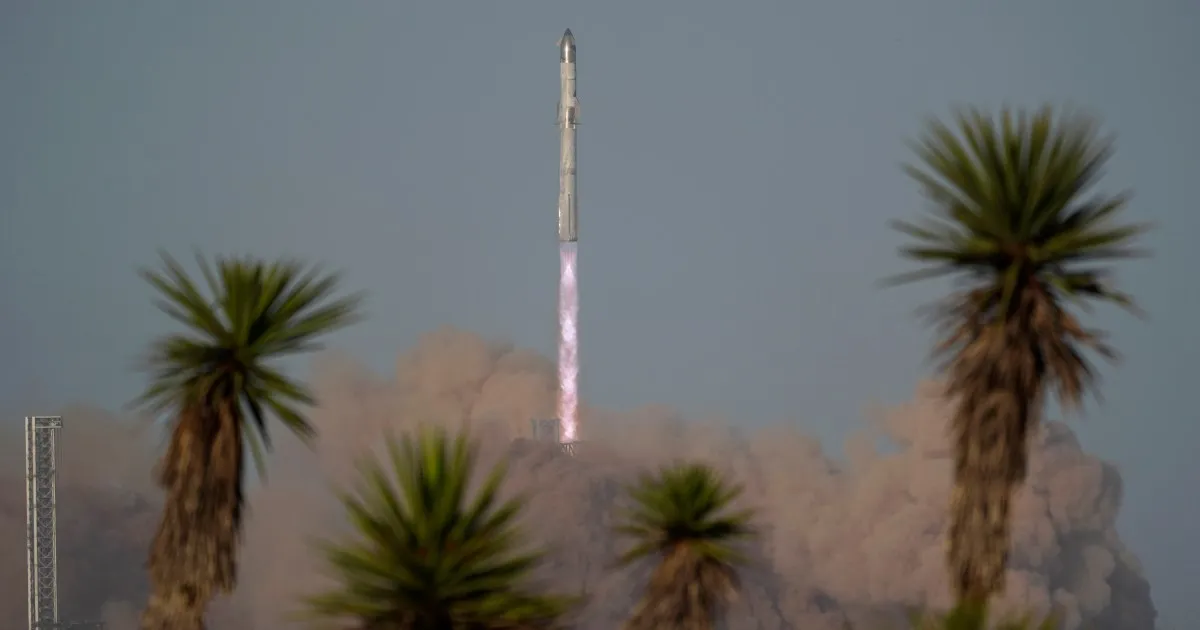
SpaceX’s Starship has once again encountered a significant setback, exploding shortly after liftoff during its second launch failure this year. This incident marks another challenge for Elon Musk’s interplanetary exploration programme, as the company strives to pioneer space travel. Despite the explosion, SpaceX achieved a notable success by returning its massive first-stage booster to the launchpad using its innovative mechanical “chopsticks” for the third time.
During the test flight on Thursday, the Starship spacecraft can be seen spinning uncontrollably shortly after its launch from SpaceX's facility in Boca Chica, Texas. SpaceX communications manager Dan Huot provided real-time updates via a livestream, stating, “You can see we’ve lost several engines and we’ve lost attitude control for the vehicle.” He further explained that the loss of several central engines led to the spacecraft losing its stability, causing it to spiral out of control. “At this point, we have lost contact with the ship,” Huot added, highlighting the severity of the situation.
Footage shared on social media depicted fiery debris plummeting through the skies over southern Florida and the Bahamas as remnants of the Starship reentered the Earth’s atmosphere. This prompted the Federal Aviation Administration (FAA) to temporarily suspend operations at four airports in Florida, including Miami International Airport, due to safety concerns regarding falling debris. In response to the incident, the FAA has initiated a “mishap investigation” to uncover the root cause of the explosion and to implement corrective measures to prevent future occurrences.
This mixed outcome follows SpaceX’s seventh test flight in January, which ended dramatically with the mid-flight breakup of the Starship. That incident required airlines to reroute flights to avoid potential hazards from falling debris. Following Thursday’s launch failure, SpaceX released a statement indicating that the spacecraft had “experienced a rapid unscheduled disassembly” before losing contact. The company emphasized its commitment to safety, stating, “Our team immediately began coordination with safety officials to implement pre-planned contingency responses.”
SpaceX reassured the public that it would analyze data from the recent flight test to better understand the underlying issues. “As always, success comes from what we learn, and today’s flight will offer additional lessons to improve Starship’s reliability.” This commitment to learning from failures is crucial as SpaceX continues its partnership with NASA in developing Starship for the Artemis programme, which aims to return astronauts to the Moon within this decade.
Elon Musk, recognized as the world’s richest man, remains optimistic about the future of space exploration. He has expressed his ambition to use Starship to establish a permanent colony on Mars by 2050. Despite the setbacks, Musk's vision continues to drive innovation in aerospace technology, emphasizing the importance of perseverance in the face of challenges.